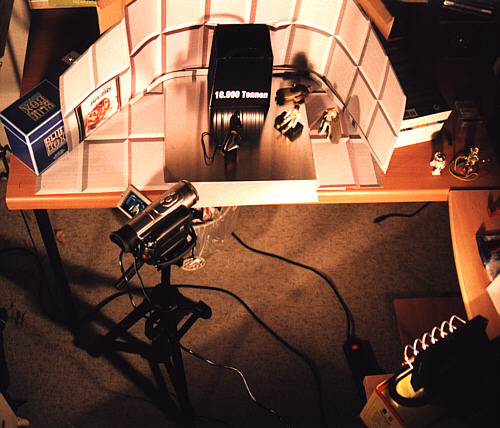|
The term animated film generally means animated films, such as Cartoons, but also doll films created by means of single image recording, or plasticine males. Of course, the term can be used to describe any scene in a film in which any means are used for trickery, but primarily it means creating a movement or animating objects using a single image. One of the best known cartoons is e.g. Chicken run. The principle is always the same and should be familiar to most.
Movements in a scene are recorded frame by frame and strung together. In the case of cartoons using hundreds or thousands of drawings. Everyone knows the so-called flip book, in which a small block contains countless drawings. If you want to move the arm of a figure, you have to make dozens of individual drawings in the cartoon, in which the arm is drawn a little further with each subsequent drawing. If you take the drawings one after the other, frame by frame, you will later get the impression of movement when you play them back.
I am not concerned with the cartoon, but with the animation of objects such as Dolls or figures. Also referred to as picture for picture taking or stop motion technology. As I said, the principle is simple. The execution depending on the material used is all the more difficult! Take e.g. Like me, figures that have miserable stability, it can be quite difficult to move a single arm without the figure falling over. You also have to be careful not to move the figure´s stand, otherwise there will be an unnatural migration across the ground. Since my sample film characters also have very limited freedom of movement, I also had to tie Princess Leia to wires so that she was even able to take a single step.
The procedure is as follows: You place the camera on a tripod and connect it directly to the PC. Adobe Premiere has a frame for frame recording and is therefore able to string individual frames together to form an entire film. Now you position the figures. Then you take a picture and move part of the figure a little. Then another picture and another small movement, etc.
It quickly becomes clear that creating an animated film is not an easy thing, on the contrary, it can be quite exhausting and labor-intensive. A small mistake and the recording is in the bucket and must be repeated. However, the Aha! Effect that you achieve with it is absolutely worth the effort. In addition, there is a little work in post-processing, because with the single image recording you only took the image, not the sound! This must be added again using sound effects from a CD or real recordings. The finished result including a small mistake can be seen in the example film above. The small mistake can be seen at the point where Darth Vader strikes just before he hits Leia on the head. The whole scene slips a little to the right. Something like this happens if you are not careful and hit the tripod of the camera with your foot ...
A little tip at the end: We remember that our Pal film needs 25 frames per second. Now you could make full use of it and add a new movement to the figure after each picture. Although this would lead to very fluid movements, it is immensely complex. It can be made easier if you take two pictures instead of one picture after each movement (I saw it this way at a TV show called the show with the mouse. In one episode there was a special about the creation of a cartoon sequence with the mouse). In practice, this is done with most cartoons. The resulting half frame rate leads to jerky movements, but that is precisely a small hallmark of the cartoon.
|




